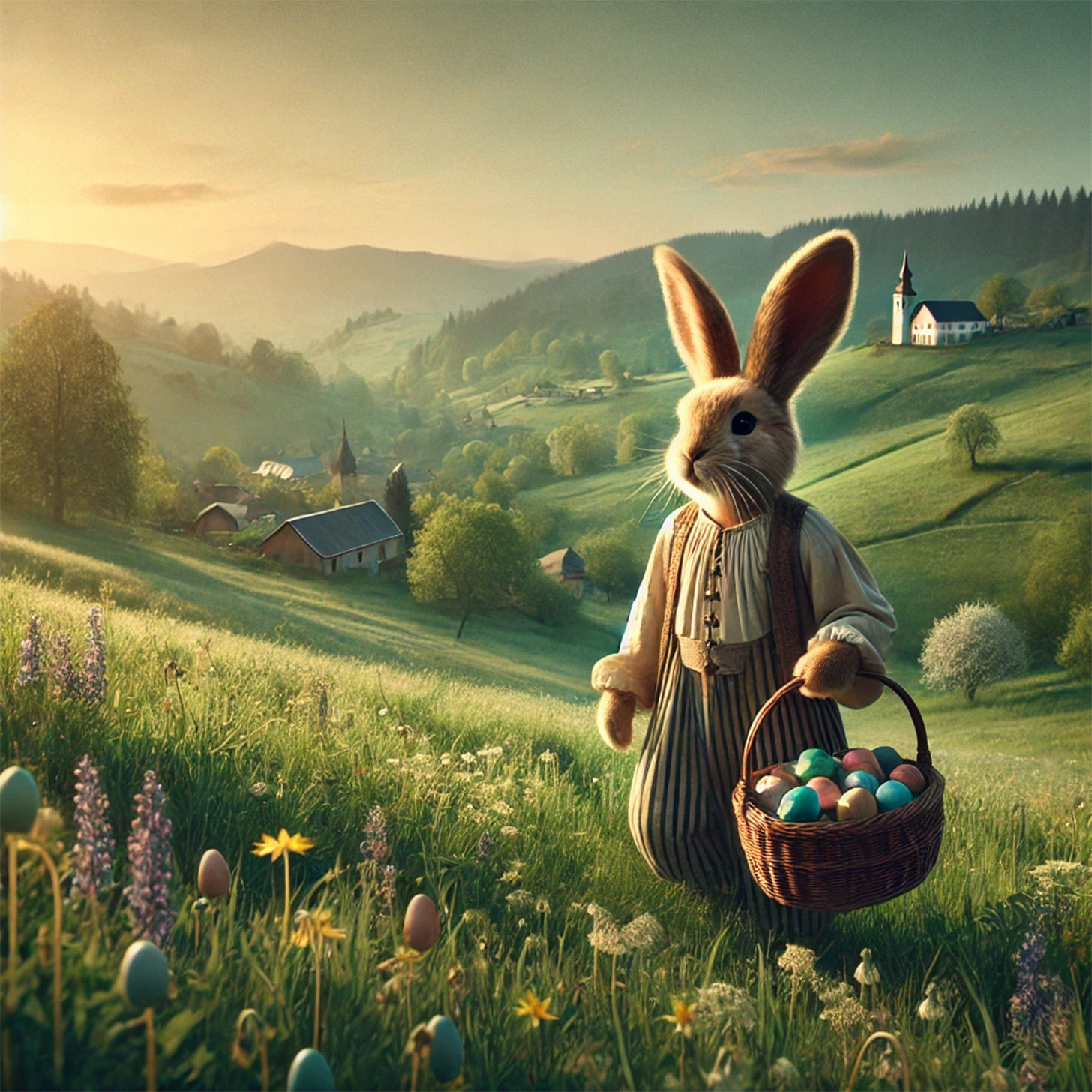Myth of the Day: Easter Bunny
Uncover the enchanting origins and mystical role of the Easter Bunny, a magical symbol of rebirth and joy.
Region/Culture: Northern Europe, Central and Eastern Europe, North America
Mythos: Modern Mythology
Primary Type/Nature: Fairy Folk and Spirit Beings
Mythical Attributes: The Easter Bunny is believed to lay colorful eggs and distribute them, along with candy and toys, to children during Easter.
Role in Mythos: The Easter Bunny serves as a symbol of fertility and rebirth, tied to the Christian holiday of Easter, but also likely having older, pagan origins.
Relation to Humans: The Easter Bunny is largely considered a benevolent figure for children, often portrayed as leaving behind eggs and treats. While generally not interactive in the lore, the Easter Bunny’s presence is often felt through the tokens and gifts left behind.
Let’s embark on a whimsical journey into the realms of folklore and fantasy. Now, we’ve all grown up with the simple joy of waking up to a basket filled with colorful eggs, haven’t we? But have you ever wondered about the enigmatic creature behind it all—the Easter Bunny?
Hailing from the rolling fields and quaint villages of Northern, Central, and Eastern Europe, the Easter Bunny isn’t an ordinary member of the rabbit family. Oh no, it belongs to the enchanting dominion of Fairy Folk and Spirit Beings. To understand this creature, you must first grasp its very essence, which is not just fur and whiskers. This is an anthropomorphic rabbit—a rabbit that stands on its hind legs and carries with it a basket full of Easter gifts.
But how did this amiable leporid come to be? It’s a tale interwoven with both Christian symbolism and much older pagan traditions. While the figure is closely tied to the Christian holiday of Easter, it’s likely that the Easter Bunny has roots that go further back in time, to pre-Christian traditions that celebrated fertility and rebirth. Indeed, the very act of laying colorful eggs—a biological impossibility for the ordinary rabbit—speaks of magical abilities and a symbolic resonance that stretches beyond simple biology.
In the narrative folklore, you don’t often find tales where the Easter Bunny holds conversations or goes on quests. This mythical figure functions more like an unseen granter of joys, an anonymous benefactor. While not particularly interactive, the Easter Bunny’s role is crucial. It serves as a powerful symbol of fertility and rebirth. As winter’s chill gives way to spring’s bloom, the Easter Bunny comes into play, enriching the season with hues of joy and splendor.
Now, as you might expect from a being with such a singular purpose, the Easter Bunny does have a set of extraordinary abilities. Imagine, if you will, the organizational prowess required to distribute eggs, candy, and toys to children all around the world in one night. The Easter Bunny must have a magical sense of time and geography that far exceeds our human limitations. Moreover, the creature has the extraordinary skill of egg-laying, a feat quite outside the realm of regular rabbits, not to mention the inexplicable capability to produce eggs of various hues. Yes, these are not just any eggs; they’re imbued with the essence of spring itself.
Yet, even magical beings have their limitations. The Easter Bunny, for all its symbolic importance and magical prowess, is tied to a particular time and a specific ritual. It doesn’t have the freedom to roam the world year-round or to alter its basic nature. Its very existence is dictated by the cyclical pattern of the seasons and the collective belief in its annual duty.
In the end, the Easter Bunny remains a paradox—a creature rooted in ancient traditions yet perfectly suited for modern celebrations, a rabbit that’s not quite a rabbit, a mythical being whose physical absence is made up for by the tangible joy it brings. But isn’t that the very charm of myths? They offer more than just stories; they give us symbols, rituals, and a touch of magic to brighten our otherwise mundane lives.
Suggested Further Reading
The Modern Myths: Adventures in the Machinery of the Popular Imagination by Philip Ball
Modern Mythology: Unveiling the Power of Contemporary Myths and Folklore by Andrew Lang
The United States of Cryptids: A Tour of American Myths and Monsters by J. W. Ocker
If you enjoy our content, please consider making a donation to support the people of Ukraine. Click here to visit the official Ukrainian donation website.
Explore more myths and wonders by visiting godsandmonsters.info.
Enjoy mythic tales on the move with our podcast, Five Minute Mythology.





